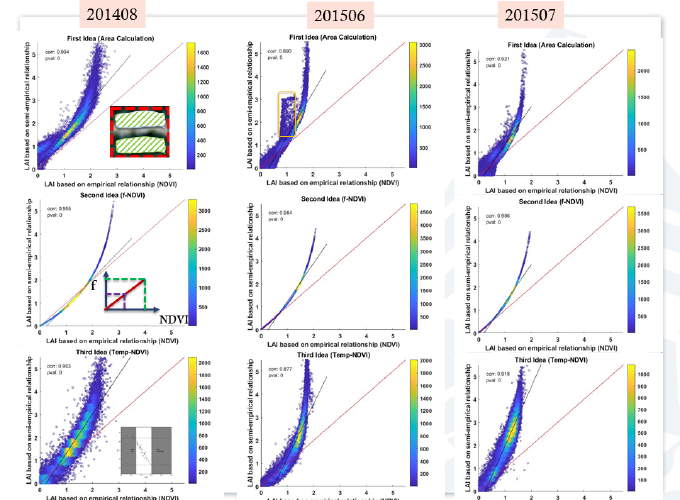Two source energy balance model (TSEB) with internal LAI estimation for evapotranspiration estimation using sUAS high-resolution imagery over vineyards

Two source energy balance model (TSEB) with internal LAI estimation for evapotranspiration estimation using sUAS high-resolution imagery over vineyards
Abstract
In recent years, improvements on two source energy balance models using the Priestley-Taylor approach for an initial estimate of crop transpiration (TSEB-PT) have been developed to take advantage of high-resolution information from small unmanned aerial systems (sUAS). A recently proposed contextual-based TSEB for component temperature estimation (TSEB-2T) takes advantage of high spatial resolution measurements of radiometric temperature (Tr) to directly derive canopy (Tc) and soil (Ts) temperatures, based on a contextual linear relationship between a vegetation index and Tr. As in other TSEB models, TSEB-2T requires LAI to calculate radiation partitioning as well as the resistances to heat transport from the soil and vegetated canopy to the lower atmosphere. In this study, we propose an enhancement of TSEB-2T that does not require the use of in-situ nor multispectral estimates of LAI. This method incorporates a radiometric temperature partitioning equation to internally calculate the gap fraction and hence LAI, based on the already estimated Ts and TC, which can then be used into the TSEB model. The proposed enhancement is tested on imagery from the Utah State University AggieAir sUAS Program as part of the ARS-USDA GRAPEX Project (Grape Remote sensing Atmospheric Profile and Evapotranspiration eXperiment) conducted since 2014 over multiple vineyards located in California. The results include comparison between internal (proposed) and empirical LAI estimation (current) along with assessment of TSEB-2T evapotranspiration results. The utility of this method under a range of vegetation cover and environmental conditions is discussed.
